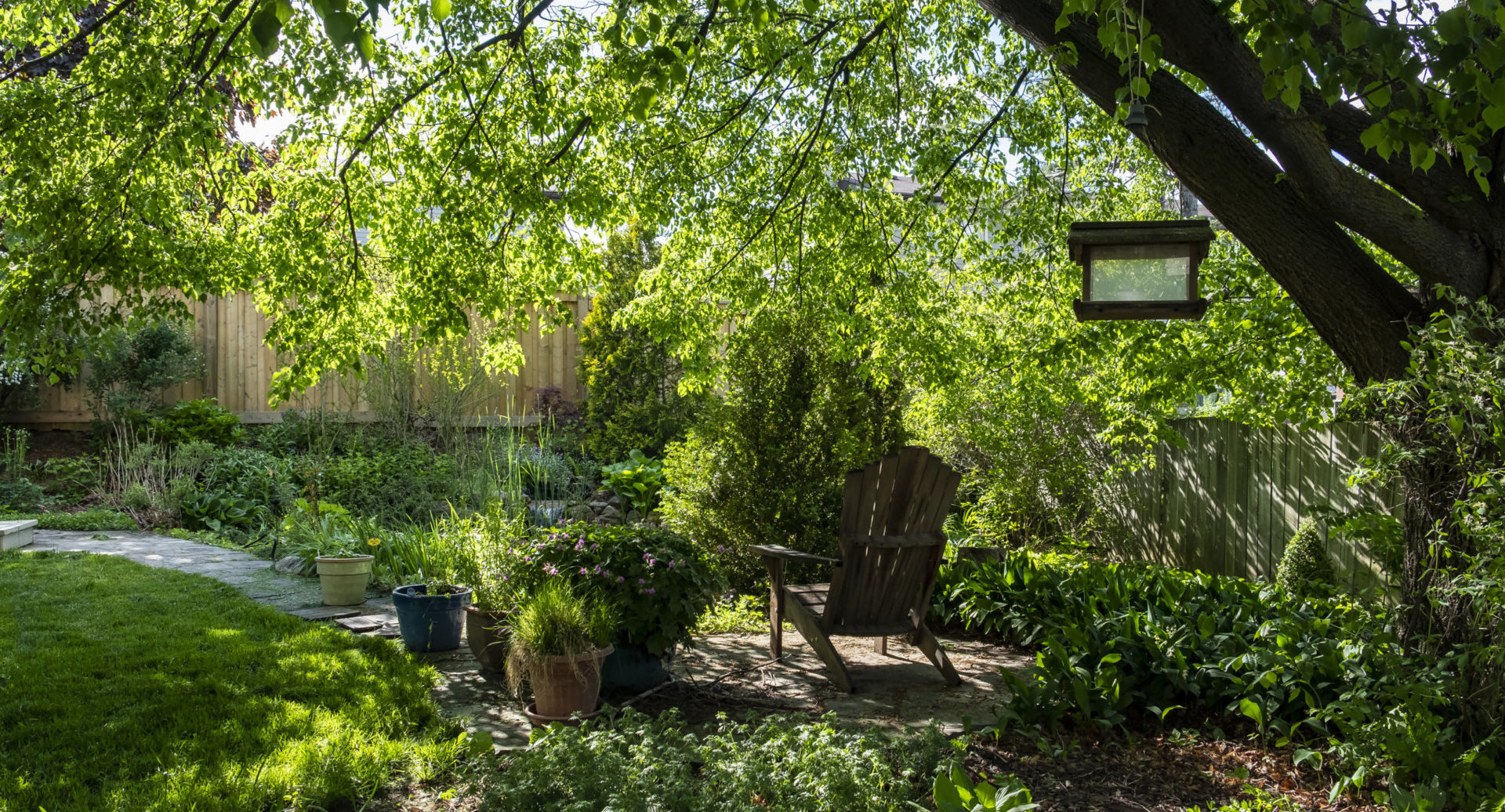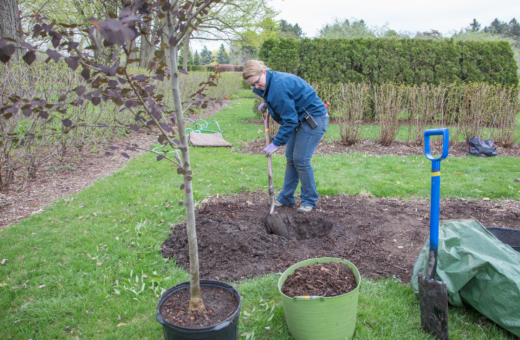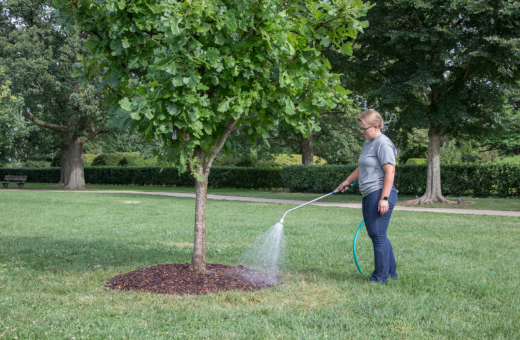April 13, 2022
Brooke Pudar, Adult Learning Programs Specialist, The Morton Arboretum
Spring is here, and as the days grow longer and the soil warms, eager gardeners have spades and seedlings at the ready. Experienced gardeners are especially aware of seasonal cues, which inform their actions throughout the planting and growing seasons.
In recent years, however, seasonal patterns have become more unstable, according to Arboretum forest ecologist Christy Rollinson, PhD. Wetter Midwest springs are making soil too soggy to dig. Long periods of dry weather mixed with occasional heavy rain events have left gardeners facing flooded yards. Dr. Rollinson noted that the Arboretum’s records show that the “spring bloom-out is getting earlier, but the date of the last freeze, which can really determine if it’s safe to plant your garden yet or not, is not moving in proportion.” This has led to damaged leaves and burned flower buds, she says.
Gardening in a changing climate certainly presents challenges. Does that mean it’s time to throw in the trowel? Not according to Heather Prince, horticulturist and Plant Clinic volunteer who teaches the Arboretum’s Climate-Friendly Gardening Workshop.
“Climate change gives us the opportunity to try new techniques, be flexible in our plant choices, and embrace seasonality in our garden spaces,” Prince says. She advises gardeners to pay attention to rainfall and temperatures to give plants the best chance to establish. “Plants are incredibly resilient. They’ll surprise you.”
Not only can gardens thrive in unpredictable conditions, but they can also lessen the impacts of climate change. Even a small home garden can store carbon, provide sanctuary for pollinators and wildlife, control runoff, and create a cooling microclimate around your home.
Plus, taking action in your garden makes a difference beyond the boundaries of your yard. According to an assessment by the Chicago Region Trees Initiative, residential spaces account for nearly 70 percent of the plantable space in the Chicago metropolitan area. Can you imagine if each of those homes had a climate-resilient garden? Your little garden can be part of that broader impact!
Here are five actions you can take to make your garden more resilient.
- Choose hardy plants that can handle extreme conditions, such as areas that tend to collect water or dry out quickly. A good choice are perennial plants with longer expected life spans that can handle tough conditions. Garden centers can advise on selections.
- Replace some of your lawn with garden beds. Turf grass requires a lot of water and other resources to thrive and sequesters very little carbon.
- Water wisely and consider adding a rain garden with native shrubs and perennials to an area that tends to collect runoff, where they will be able to absorb excess rainwater.
- Care for your soil. Healthy soil can hold more water, improve drainage, and sequester carbon. Plant fall and winter cover crops in your edible beds to boost the benefits of the soil. Add compost and manure, which improve soil structure and add nutrients without using chemical fertilizers.
- Plant a tree. Choose one that’s different from your neighbors. Increasing the variety of trees in your neighborhood helps ensure the continuation of the urban canopy when one species declines because of a pest or disease. Find the right tree for your space with the Tree and Plant Finder, or talk with an expert at the Arboretum’s Plant Clinic.
Interested in digging deeper? The Morton Arboretum offers educational programs year-round about climate change and how you can take action at home and in your community.



